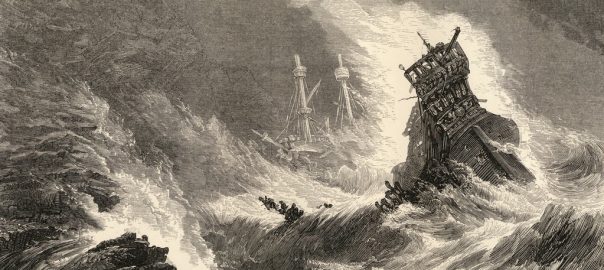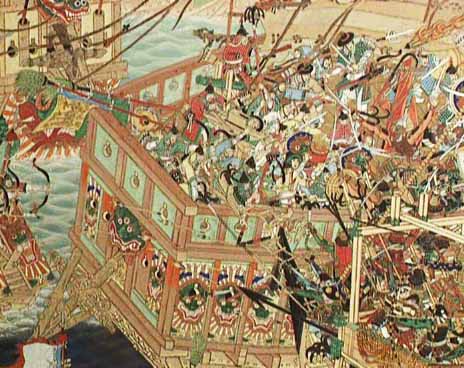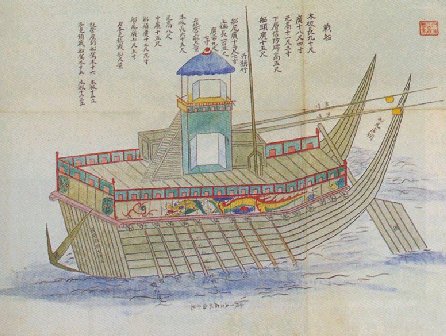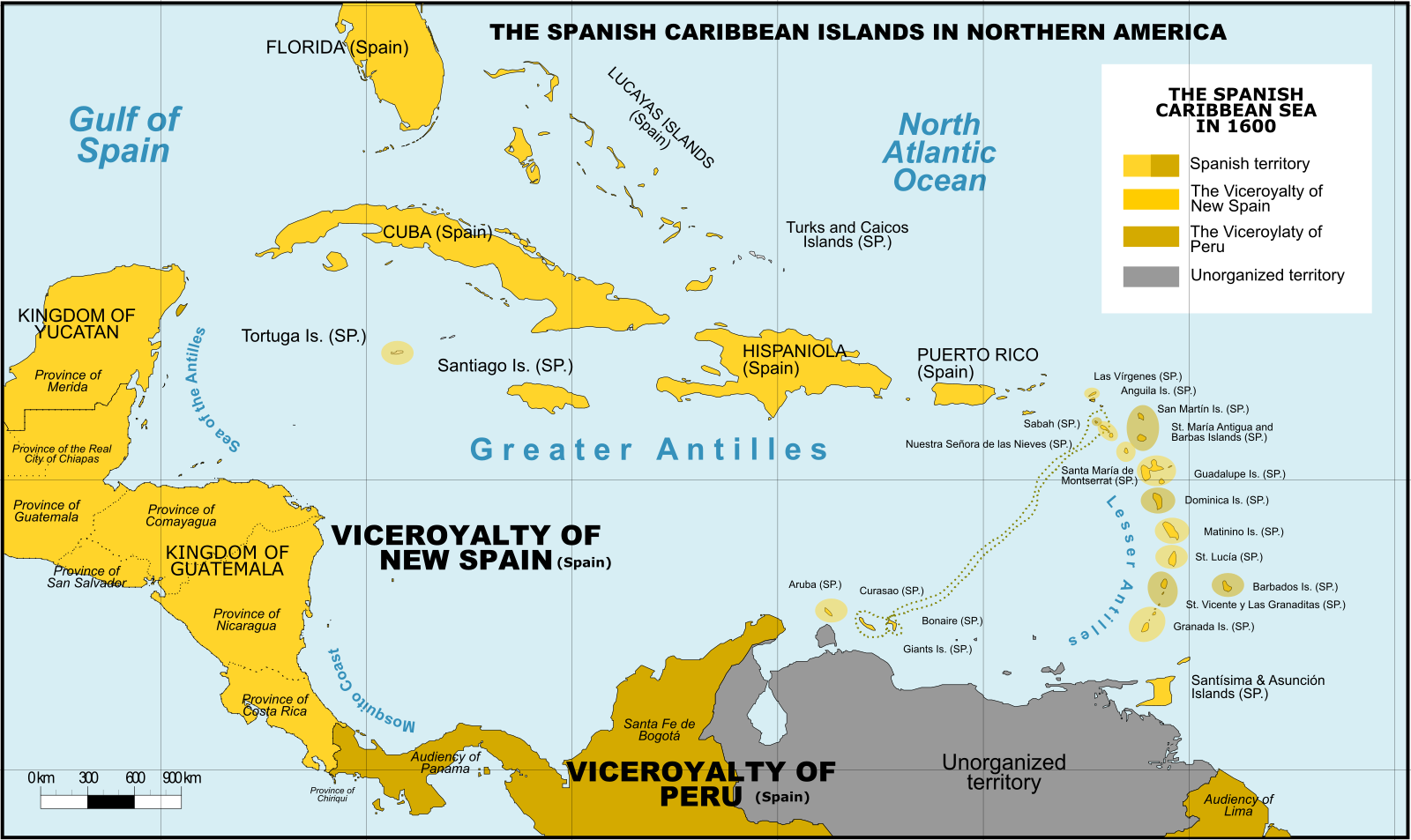Well, here’s a quick sitrep for 1597 CE. As we know, various multi-year stories are playing out this year, including the Ottoman battles in Hungary, the Safavid battles in Khorasan, the Dutch expeditions in the Spice Islands, Spanish conquistadores in the Americas, the Dutch uprising against Spanish remnants in Netherlands, etc etc. But we’ll just focus on two theaters of battle this year: in Korea and in the North Sea/Atlantic.
By the way, yesterday I published this longer analytical piece, “How ‘the West’ was born” over at Just World Educational.
Today’s sitrep:
In Korea
This year, there were several significant land and sea battles in and around Korea, where the Japanese invasion force had been trying since 1592 to grab control of the whole peninsula but were being resisted both by the fighters of the Korean Joseon Dynasty and by the Ming-dynasty allies they had called in from China.
The first of these battles was a naval battle that took place at Chilcheollyang, off the southeast end of Korea in late August. According to accounts (e.g. here) in English-WP, a clever Japanese plot had caused the Joseon Emperor to replace his very capable naval commander Yi Sun-sin with a complete dud called Won Gyun. In this battle he proved his huge incompetence by losing miserably, losing a total of 188 of the 200 ships he had started out with:
On the night of 28 August, a Japanese fleet of 500 ships moved into the strait and attacked. By dawn, nearly all the Korean ships had been destroyed. Won Gyun fled to the mainland but could not keep up with his men. He sat down under a pine tree until the Japanese found him. It is assumed that his head was cut off. [Another naval commander, more capable] Yi Eokgi also died during the battle after drowning himself.
In mid-October, a Japanese land force of 30,000 confronted a Ming force of 8,000 near Jiksan in the northwest– not far from the Korean capital of Hanseong (Seoul). This happened:
Although heavily outnumbering the Ming, the Japanese were unable to do much damage due to the Ming’s superior armor. According to [two of the Japanese commanders], their firearms could not penetrate the iron shields used by Chinese soldiers, and their armor was at least partially bulletproof. The battle continued until dusk when the two sides withdrew.
A little later in October, the Korean navy was back! The emperor had reinstated super-admiral Yi Sun-sin who had used the past two months to do what he can to save the Korean navy (and therefore also the Joeson-Korean state itself.) Here’s what he did:
Admiral Yi studied numerous sites for his last stand with the Japanese navy and decided on luring them into the Myeongryang Strait. The Japanese would clearly enter the strait when the tide was favorable and so he did not want to fight south of the strait, with the current at the attacker’s advantage. Instead, he wanted to fight in the waters just north of the strait, where the currents were calmer. The strait had very strong currents that flowed at approximately 10 knots, first in one direction and then in the opposite direction, in three-hour intervals. Yi realized that he could use the unique condition as a force multiplier. The narrowness of the strait would prevent the Joseon fleet from being flanked by the numerically-superior enemy fleet, and the roughness of the currents prevented the Japanese from effectively maneuvering, force them to attack in smaller groups, and make it difficult to close in with the Korean ships. Furthermore, once the tide changed, the flow of the current would in effect push the Japanese away from Yi’s fleet, and the momentum could be harnessed to increase the effectiveness of a counterattack.
It worked brilliantly. Yi had only 13 ships, facing a Japanese fleet more than ten times as large. Yi did not lose any ships, though a handful of his sailors/fighters were drowned. The Japanese lost 30 ships destroyed and half of their marines/soldiers dead or wounded. “Even after the victory, however, the Joseon navy was still outnumbered by remaining Japanese forces and so Admiral Yi withdrew to the Yellow Sea to resupply his fleet and have more space for a mobile defense.” The Ming navy also sent some reinforcements down to aid him.
England and Spain battling at sea
We’ll start with an English adventurer called Anthony Shirley (born 1565.) In 1596, he had “conducted a predatory expedition along the western coast of Africa and then across to Central America, including a raid on Spanish Jamaica (Santiago), which he reached in February 1597.” After landing on Jamaica he reportedly plundered the island, marched to the settler-town of St Jago de la Vega, which he sacked.
(By the way, from that latter WP page I learned this about Jamaica’s pre-Columbian indigenes, the Taino: “Some of the words used by them, such as barbacoa (“barbecue”), hamaca (“hammock”), kanoa (“canoe”), tabaco (“tobacco”), yuca, batata (“sweet potato”), and juracán (“hurricane”), have been incorporated into Spanish and English.”)
Shirley’s over-all expedition was not a huge success. He had left London with five ships and returned with only one. The following year, he would travel to Persia, where he had further adventures…
But he was just one adventurer. A bigger raid on Spain’s overseas possessions that was undertaken by English expeditionary forces that year– under the direct orders of Queen Elizabeth– was something called the Islands Voyage. It was led by the biggest bigwigs of English naval planning at the time: Sir Robert Devereux, Earl of Essex, as Admiral and General-in-chief, Sir Thomas Howard, Earl of Suffolk, as Vice-Admiral, and Sir Walter Raleigh as Rear-Admiral. They were aided by a Dutch squadron.
Their ambitious objectives as they set out from Plymouth on this expedition, in June 1597, were as follows:
- to destroy the Spanish fleet of the Adelantado of Castile, Martín de Padilla y Manrique, Count of Santa Gadea, at the port of Ferrol, a place on the northwest coast of Spain that was also Spain’s main naval arsenal;
- to occupy and destroy the Spanish possessions in the Azores Islands; and
- to intercept the Spanish treasure fleet coming from America as it passed through the Azores.
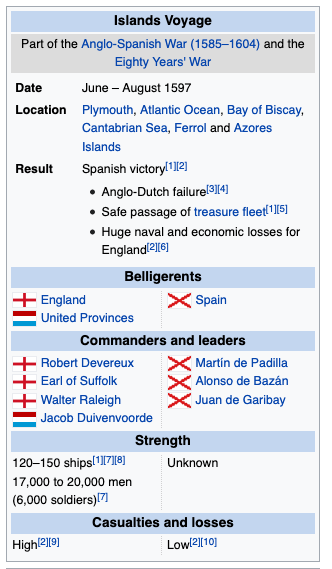
Intriguingly, and very uncharacteristically, English-WP provides almost zero details of what went wrong with the English plans. But it was clearly a massive failure (see the summary they provide, right.)
This is what WP says about the subsequent fallout:
The Anglo-Dutch fleet returned to England with great losses and a war of recriminations between Essex and Raleigh…The expedition was the last major naval campaign of Elizabeth I of England. Essex’s failure to capture the treasure fleet, and his failure to occupy the Azores Islands, contributed to his decline in the queen’s favour.
All was not completely lost for England in 1597, however. Even before the Earl of Essex and the remainders of his fleet had managed to straggle home, the wily Adelantado of Castile was planning another Armada raid on England (and Wales.) In this 3rd Spanish Armada, the Adelantado was planning to intercept and destroy the Essex’s fleet in the English Channel in October, before it could get home from the Azores… and then go on to capture either the important port of Falmouth (in Devon)or Milford Haven (in Wales) and use those places as a base for a further invasion of English/Welsh territory.
This plan was– like other Armada attempts against England before it– stymied by the arrival of a bad storm that scattered the Spanish fleet. (The banner image above is a late 19th-century depiction of Spanish Armada ships breaking up in a storm.)
When Spain’s King Philip II learned of the failure of the 3rd Armada he went into something a funk, shut himself away in his palace, and died the following year.
English-WP gives the following broader summary of the fallout from the fate of the 3rd Armada:
The Spanish would never again try a large naval armada directed at England. The cost had almost been ruinous to Spain and nearly bankrupted the country’s finance again. It was not as bad as the previous year’s failure however since gold and silver bullion was still arriving in numbers from the Americas. The insurmountable debt rose and soon after the campaign there was a further arrangement to clear it.
The failure of the Armada effectively ceded the naval initiative to England who were still able to launch expeditions to Spain without much hindrance.
